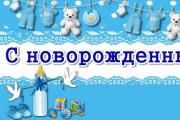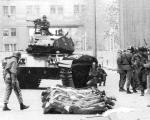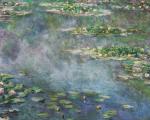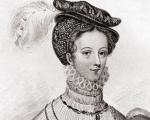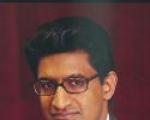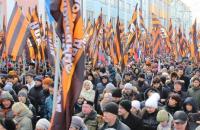Lesson objectives: 1. To repeat, to summarize the studied material on the topic "The era of Peter I". To assess the activities of Peter I. 2. To show the skills and abilities of using ICT in preparation for the lesson, as well as the skills and abilities of active search and research activities, work with sources and literature. 3. Show your creativity, interest in history; development of speech culture public speaking, the development of skills to defend one's conviction, respectfully treat the opinions of others, answer questions, lead a discussion.
Problematic questions: What is the role of Peter I in the history of Russia? Can we say that his role in the history of Russia was controversial? What is the role of Peter I in the history of Russia? Can we say that his role in the history of Russia was controversial? Why did not the name of Peter I win in the "Name of Russia" competition? Why did not the name of Peter I win in the "Name of Russia" competition?

Lesson content Repetition, generalization, control of the studied material Repetition, generalization, control of the studied material Protection of creative work (Sagngalieva A.) Protection of creative work (Sagngalieva A.) Solving problematic issues Solving problematic issues

For almost three hundred years, the figure of Peter I, his transformations cause controversy among scientists. In the dispute, from the very beginning, two opposite approaches were outlined: apologetic (admiration) and critical, which at times converged, but then diverged again. Apparently, a compromise assessment of the activities of Peter I is more realistic.

Childhood. Youth. Beginning of reign On April 27, 1682, the ten-year-old Tsarevich Peter was proclaimed tsar, but soon he was approved by the 3rd emsk council as "the second king", and John - the "first". Their elder sister, Princess Sophia, became their ruler. Until 1689, Peter and his mother, Natalya Kirillovna Naryshkina, lived in the village of Preobrazhenskoye near Moscow, arriving in Moscow only for official ceremonies. In 1689, Sophia was removed from power and imprisoned in the Novodevichy Convent. Until 1694, on behalf of Peter I, his mother, Natalya Kirillovna, ruled. In 1696, after the death of John V, Peter became the sovereign king.

Personality of Peter I The characteristic features of Peter were intelligence, will, energy, open-mindedness, purposefulness, curiosity, incredible efficiency. Peter, having not received a systematic education in his youth, studied all his life. At the same time, Peter was quick-tempered and cruel, took a personal part in torture and executions. The king did not take into account the interests and life of an individual.

The Great Embassy In 1697, the tsar equipped the "Great Embassy" to Europe and himself joined it under the name of Peter Mikhailov. In Prussia, the tsar studied artillery and received a firearms master's certificate. Peter went to England and Holland to study shipbuilding. During his stay in Europe, Peter visited factories, libraries, listened to lectures at universities. In 1698, the tsar hastily returned to Russia.

The first transformations In 1699, a reform of the calendar was carried out. A printing house was set up in Amsterdam to publish secular books in Russian. The first Russian order of the Holy Apostle Andrew the First-Called was founded. The king ordered to send young men from noble families to study abroad. In 1701, the Navigation School was opened in Moscow.

Transformations in the economy Peter I clearly understood the need to overcome the technical backwardness of Russia and in every possible way contributed to the development of Russian industry and trade, including foreign. Many merchants and industrialists enjoyed his patronage, among whom the Demidovs were the most famous. Many new factories and factories were built, new industries arose.

Lessons from the Northern War The war began with the defeat of the Russian army near Narva in 1700. However, this lesson went to Peter for the future: he realized that the reason for the defeat was primarily in the backwardness of the Russian army. The construction of metallurgical and arms factories began, supplying high-quality guns and small arms to the army. Soon, Peter I managed to win the first victories over the enemy, capture and devastate a significant part of the Baltic. In 1703, at the mouth of the Neva, Peter founded St. Petersburg the new capital of Russia.

Management reform In 1711, going on the Prut campaign, Peter founded the Senate. Senate. In 1714 the Decree on single inheritance was issued. In 1714 the Decree on single inheritance was issued. In 1717, the creation of central collegia began. In 1717, the creation of collegiums of central sectoral management bodies, sectoral administration bodies began. In 1718, a poll tax was introduced in Russia. In 1718, the poll tax was introduced in Russia. In 1720, the General Regulations were issued. In 1720, the General Regulations were issued, detailed instructions for organizing the work of new, detailed instructions for organizing the work of new institutions. institutions. In 1721 Russia was proclaimed an empire, and the Senate In 1721 Russia was proclaimed an empire, and the Senate honored Peter with the titles "Great" and "Father honored Peter with the titles" Great "and" Father of the Fatherland. " fatherland ". In 1722, Peter signed the Table of Ranks, which determined. In 1722, Peter signed the Table of Ranks, which determined the procedure for organizing military and civil service. the procedure for organizing military and civil service.

Transformations in the field of culture The time of Peter I was the time of active penetration of secular European culture into Russian life. Secular educational institutions began to appear, the first Russian newspaper was founded. Success in the service of Peter made the nobles dependent on education. By a special decree of the tsar, assemblies were introduced, representing a new form of communication between people for Russia. The interior decoration of houses, the way of life, the composition of food, etc. have changed. Gradually, in the educated environment, a different system of values, perception of the world, and aesthetic ideas took shape.

Personal life of the Tsar In January 1689, at the insistence of his mother, Peter I married Evdokia Fedorovna Lopukhina. After 10 years he imprisoned her in a monastery. Subsequently, he became friends with the captured Latvian Marta Skavronskaya (Catherine I). She bore him several children, of which only daughters Anna and Elizabeth survived. Peter, apparently, was very attached to his second wife and in 1724 he crowned her with the imperial crown, intending to bequeath the throne to her. The relationship between the tsar and his son from his first marriage, Tsarevich Alexei Petrovich, who died under unexplained circumstances in the Peter and Paul Fortress during the years of hard work and bad habits, undermined the health of the emperor, did not work out. On January 28, 1725, as a result of illness, Peter I died without leaving a will. He was buried in the Cathedral of the Peter and Paul Fortress in St. Petersburg.


Results of Peter's reforms 1) The most important result of Peter's reforms was overcoming the crisis of traditionalism by modernizing the country. 2) Russia has become a full-fledged participant in international relations, pursuing an active foreign policy. 3) Russia's prestige in the world has grown significantly, and Peter himself has become for many an example of a ruler-reformer. 4) At the same time, the main instrument of reform was violence. 5) Peter's reforms did not rid the country of the previously established system of social relations embodied in serfdom, but, on the contrary, preserved and strengthened its institutions.





2. The result of the reform activities of Peter I is considered 1) overcoming the economic backwardness of Russia from the Western countries 2) the transformation of Russia into a strong European power 3) the rapid growth of the Russian economy 4) the beginning of the democratization of political life Correct answer: 2



5. Among the phenomena that prompted Peter I to carry out transformations in Russia, there was nothing like 1) the economic lag of Russia from the advanced countries of the West 2) the backwardness in the organization and armament of the Russian army 3) the isolation of Russian cultural life from the European 4) the promise of European powers to support reforms in Russia with their investments Correct answer: 4

6.The reasons for the uprising led by K. Bulavin cannot be attributed 1) attempts by the authorities to limit Cossack self-government 2) mass mobilization of peasants for the construction of the fleet 3) increased repression against fugitive peasants 4) dissatisfaction with the dominance of foreigners in Russian service Correct answer: 4

7. The increase in agricultural productivity under Peter I was primarily associated with 1) the annexation of more fertile lands 2) the strengthening of state coercion of the peasants 3) the replacement of the sickle with a Lithuanian scythe during the harvest 4) the state's assistance to the peasants Correct answer: 2

8. As a result of the state and administrative reforms of Peter I in Russia 1) the absolute power of the monarch increased 2) the foundations of a constitutional monarchy were laid 3) the emperor began to rule together with the Supreme Privy Council 4) the functions of Zemsky Sobors expanded Correct answer: 1



Thanks to the energetic activity of Peter I in the economy, the level and forms of development of the productive forces, in the political system of Russia, in the structure and functions of government bodies, in the organization of the army, in the class and estate structure of the population, in the way of life and culture of peoples, enormous changes took place. Medieval Moscow Russia turned into the Russian Empire. The place of Russia and its role in international affairs have radically changed.
The complexity and inconsistency of the development of Russia during this period determined the inconsistency of the activities of Peter I in the implementation of reforms. On the one hand, these reforms had a huge historical meaning, since they went towards the national interests and needs of the country, contributed to its progressive development, being aimed at eliminating its backwardness. On the other hand, the reforms were carried out by the same serf methods and thereby contributed to the strengthening of the rule of the serf-owners.
The progressive transformations of Peter's time from the very beginning carried conservative features, which in the course of the country's development acted more and more and could not ensure the elimination of its backwardness in full. Objectively, these reforms were of a bourgeois character, subjectively, their implementation led to an increase in serfdom and the strengthening of feudalism. They could not be otherwise - the capitalist structure in Russia at that time was still very weak.
It should be noted that the cultural changes in Russian society that took place in the times of Peter the Great: the emergence of schools of the first stage, vocational schools, the Russian Academy of Sciences. A network of printing houses for printing domestic and translated publications has emerged in the country. The first newspaper in the country began to appear, and the first museum appeared. Significant changes have taken place in everyday life.
13) Military reform of Peter1
The essence of the military reform consisted in the elimination of the noble militias and the organization of a permanent combat-ready army with a uniform structure, weapons, uniforms, discipline, and regulations.
In the spring of 1690, the famous "amusing shelves" were created - Semenovsky and Preobrazhensky. , on the Yauza the "capital city of Preschburg" is being built.
The Semyonovsky and Preobrazhensky regiments became the nucleus of the future permanent (regular) army and showed themselves during the Azov campaigns of 1695-1696. By the end of Peter's reign, Russia had become one of the strongest maritime powers in the world, with 48 ships of the line and 788 galley and other ships.
Before Peter, the army consisted of two main parts - the noble militia and various semi-regular formations. The revolutionary change was that Peter introduced a new principle of manning the army - periodic convocations of the militia were replaced by systematic recruitment recruits. Recruiting recruits were extended to the population. In 1699 the first recruitment was made, since 1705 the recruitment became annual. From 20 households they took one person, single at the age of 15 to 20 years. The recruit's service life was practically unlimited.
Officers Russian army replenished at the expense of nobles who studied in the guards noble regiments or in specially organized schools (gunnery, artillery, navigation, fortification, Naval Academy, etc.). In 1716, the Military was adopted, and in 1720 - the Naval Regulations, a large-scale rearmament of the army was carried out. Peter had a huge strong army - 200 thousand people (not counting 100 thousand Cossacks),
The main results of the military reforms of Peter the Great are as follows:
- the creation of a combat-ready regular army, one of the strongest in the world, which gave Russia the opportunity to fight with its main opponents and defeat them;
- the emergence of a whole galaxy of talented commanders (Alexander Menshikov, Boris Sheremetev, Fedor Apraksin, Yakov Bruce, etc.);
- creation of a powerful military fleet;
- a gigantic increase in military spending and covering them by squeezing money out of the people.
14) The empire grew during the era of palace coups (1725-1762)
Peter I died on January 28, 1725, without appointing a successor to the throne. A long struggle of various noble groups for power began.In 1725, A.D. Menshikov, a representative of the new clan nobility, elevated the widow of Peter I, Catherine I. To the throne, the Empress established the Supreme Privy Council in 1726 to strengthen her power. From 1726 to 1730 The Council, limiting the power of the Senate, actually decided all state affairs.After the death of Catherine I, 12-year-old Peter II, the grandson of Peter I. Dolgoruky and Golitsyn. Peter II fell under the influence of the old boyar aristocracy, in fact gave power to the Supreme Privy Council. In 1730, Peter II died of smallpox, and the niece of Peter I, wife of the Duke of Courland, Anna Ioannovna, was invited to reign. Before accepting the crown, she agreed to the terms of limiting her power in favor of the Supreme Privy Council, but after becoming empress, she immediately dissolved the council and repressed its members. From 1730 to 1740 the country was ruled by the favorite of the Empress E. I. Biron and his entourage from the Germans. It was a decade of the dominance of foreigners, a time of rampant brutality of the authorities and embezzlement. In 1740, Anna Ioannovna announced her sister's three-month-old grandson heir to the throne, and appointed Biron as regent.
In November 1740, as a result of a palace coup, the regency was transferred to Anna Leopoldovna. In November 1741, after another coup caused by dissatisfaction with the continued German dominance, Elizaveta Petrovna (1741-1761) ascended the throne. and Sweden, she arrested and imprisoned the infant emperor, exiled I. Minikh, A. I. Osterman and other foreigners who claimed power to Siberia. During her reign, there was a return to the Peter's order and their strengthening. Elizabeth pursued a policy of strengthening the rights and privileges of the nobility. The landowners were given the right to sell peasants as recruits. Customs duties were abolished. Prussian aggressive policies forced Russia to enter into an alliance with Austria, France and Sweden. The seven-year war of 1756-1763 began. A 100,000-strong Russian army was sent to the territory of Austria against Prussia. In the summer of 1757, Russian troops, having entered Prussia, inflicted a crushing defeat on the Prussians at the village of Groß-Jegersdorf. In 1758 Konigsberg was taken. In the same year, a major battle took place with the main forces of King Frederick II at Zorndorf. The Russian army under the command of General P.S. Saltykov with the support of the allied Austrian troops as a result of a bloody battle practically destroyed the army of the Prussians. The capture of Berlin in 1760 brought Prussia to the brink of disaster. From this she was saved by the death of Empress Elizabeth Petrovna, which came on December 25. 1761 g.
After the death of Elizabeth Petrovna, her nephew Peter III (1761-1762) ascended the throne, who ended the war and returned all previously conquered lands to the Prussian king Frederick II. He made peace with Prussia and entered into a military alliance with Frederick II. Peter III did not understand the beliefs and customs of the Orthodox Church and neglected them. The Pro-Prussian policy caused discontent with his rule and led to an increase in the popularity of his wife, Sophia Frederica Augusta of Zerbst. Unlike her husband, she, being a German, converted to Orthodoxy, observed fasts, and attended services. In Orthodoxy, she received the name Ekaterina Alekseevna.
June 29, 1762 with the help of the guardsmen of the Izmailovsky and Semenovsky regiments, Catherine seizes power. Peter III signs an act of abdication and dies at the hands of security officers.
1721 was the year when Russia, having concluded the Treaty of Nystadt with Sweden to its full advantage, acquired its official name Russian Empire... Its founder, Peter, was presented by the Senate with the title of “Father of the Fatherland, Emperor of All Russia, Peter the Great”.
The mighty mind and iron hand of Peter I touched everything that Russia lived with at that time, and subjected her life to profound transformations. They covered industry, agriculture, trade, government, and the position of classes and social groups, etc. The country has made a leap from patriarchal backwardness to all-round development. The sprouts of secular spiritual life appeared: the first newspaper, the first professional schools, the first printing houses, the first museum, the first public library, the first public theaters.
This was truly the great work of Peter. But it began with the transformation of state defense and its main engine was military campaigns.
The impetus for everything was given by the two Azov campaigns of Peter I against Turkey, when the vital necessity of organizing the Russian army as a regular one and the creation of naval forces was realized. And this required the rapid development of industry, in particular, metallurgy, the rise of agriculture and, in general, the reorganization of the entire state. Meanwhile, the Azov campaigns, crowned with the capture of Azov and, to some extent, strengthening the security of Russia's southern borders, did not bring the main result - access to the Black Sea.
The international situation, in particular, the disintegration of the anti-Turkish Holy League, for a long time averted the “thoughts and eyes” of Peter I from the Black Sea region. But Russia had an opportunity (the struggle of the major European powers for the "Spanish inheritance" began) to go to war with Sweden, in coalition with Saxony and Denmark, for the return of its outlet to the Baltic Sea. This long, bloody war, known as the Northern War (1700-1721), ended with a crushing defeat for the first-class Swedish army and Russia's conquest of the Baltic coast from Vyborg and St. Petersburg to Riga, which allowed it to enter the rank of great powers.
The Northern War was the crucible in which the regular Russian army and naval forces were tempered and strengthened, the strategy and tactics of Peter I and his generals were formed.
In contrast to the cordon strategy focused on the dispersal of troops, but, in fact, on defensive actions, the strategy of Peter I was decisive in nature: he strove to concentrate troops in a decisive direction and not so much to seize territory, but to destroy the enemy's manpower and artillery. ... His strategy did not shy away from defense, as he showed in the early years of the Northern War, but he reduced the very essence of defense not to aimless maneuvering, as the cordon strategy prescribed, but to exhausting the enemy and gaining time in order to give a decisive battle and defeat his. True, he considered this battle "extremely dangerous business" and avoided it in an unfavorable situation.
Peter I and his generals remained adherents of linear tactics, but introduced innovations into it that left only an external resemblance to a linear battle formation in the proper sense of the concept. The linear structure adopted in the Russian army assumed, for example, a reserve and the so-called private lines (lines of private support). This made it deeper and more stable. The art of military engineering was greatly developed.
The Russian troops carried out the siege of the fortresses, combining the actual engineering methods of action (digging, minting, etc.) with massive artillery fire for the transition to the assault. The fortress fortification turned out to be strong, as evidenced by the heroic defense of Poltava.
The way Peter I demonstrated the art of fighting on the battlefields became a school in which great commanders such as A.D. Menshikov, B.P. Sheremetev, M.M. Golitsyn, F.M. Apraksin grew up.
Russia paid a dear price for the successes in the wars that it had to wage. Despite the acquisition of the "populous" Baltic provinces, the population in the country decreased under Peter against the number that was under Tsar Alexei, it is believed, three million. After Peter, the decline increased even more. But these heavy sacrifices were not made for nothing, but in the name of the real needs of the great state - economic development and ensuring the military security of Russia.
After the death of Peter the Great, the development of his undertakings in military affairs made its way through the “pro-Russian” influence of Peter II and Peter III and their entourage and was expressed in the thoughts and military deeds of such generals - geniuses of Russian military art - as P.A. Rumyantsev, A. .V. Suvorov and their followers. They increased the military glory of Russia (M.I.Kutuzov, P.I.Bagration) and fully satisfied its national interests.
Do not count the innovations they introduced into the Russian military art of the 18th century. The strategy of P.A. Rumyantsev, A.V. Suvorov had a solid foundation: careful consideration of the operational-strategic situation. Its cornerstone was the need to defeat the enemy piece by piece with the imposition of the place and time of the general engagement. Both P.A. Rumyantsev and A.V. Suvorov, and after them M.I.Kutuzov and P.I.Bagration, invariably sought to deliver the main blow with concentrated forces on a narrow front. At the same time, they usually resorted to demonstration actions in secondary directions, thereby misleading the enemy. Both of them were supporters of a deep formation of troops, frontal attacks, and especially flank and roundabout maneuvers in their organic combination.
Children of their age, they, of course, have not yet freed themselves from the diapers of the cordon strategy, resorting to excessive maneuvering and not so much to the destruction of manpower as to the capture of fortresses, which sometimes took a long time. They preferred bayonet rather than fire combat, although artillery was highly valued. But still they stood firmly on their feet, crushing the enemies of Russia.
Despite the difficult situation caused by political contradictions within the coalition, as well as different views on the conduct of war between the allied armies, in the course of hostilities, he firmly and consistently pursued his principles of strategy and tactics. He enriched the art of war with examples of skillful choice of the direction of the main attack, the transition to a counter battle from the march, the defeat of the enemy in parts (Trebbia), demonstrative actions in a secondary direction and a strike by superior forces on the main grouping (Novi), the organization of forcing a water barrier on a wide front (Adda ). Suvorov's success was facilitated by the high moral and combat qualities of the Russian troops, as well as the support of the Italian people, who sought to free themselves from the French invaders with their help.
Multifaceted and contradictory in its specific manifestations and historical consequences, it is evaluated in different ways in historiography. At the same time, assessments of the activities of Peter I are largely determined by those fundamental theoretical (methodological) approaches that some researchers adhere to. Within the framework of all scientific directions, which are based on the idea of the progressive, progressive development of mankind, generally positive assessments of the activities of Peter I are given.
So, in the 30s and 40s. XIX century. Westernizers (T.N. Granovsky, S.M. Soloviev, M.N. Katkov, K.D. Kavelin and others), considering Russia a country following the Western European path of development, defending the need to use the experience of the West, concluded that that Peter I carried out an extremely useful business for the country, reducing its lag behind Europe, etc. Historians of the "state school" (first of all, S. M. Soloviev) wrote about the reforms, about the personality of Peter I in enthusiastic tones, attributing to him all the successes achieved both within the country and in Russia's foreign policy.
In the XX century. representatives of the historical-materialist direction (B.A. Rybakov, N.I. Pavlenko, V.I.Buganov, E.V. Anisimov, etc.), came to the conclusion that as a result of the the path of progress, turned into a European power, and the absolutist regime created by Peter I did not differ significantly from the absolutist regimes of the West. But at the same time, attention is drawn to the fact that the necessary reforms were carried out at a high price, due to the intensification of the exploitation of the people.
Representatives of the liberal trend (I. N. Ionov, R. Pipes, etc.), who pay the main attention to the development of the individual, recognize the merits of Peter I in the Europeanization of the country, turning it into an advanced power. But at the same time, they believe that the country was drained of blood due to the overstrain of the popular forces, and the space of freedom narrowed, since each person was limited in his activities by the framework of state interests. As a result of "Westernization" (in the sense of "blind" copying of Western ideas and orders), not absolutism, but Asian despotism, only superficially similar to Western absolutist monarchies, took root in Russia.
By the end of the reign of Peter I, the country was a military-police state with a serf economy: the reforms preserved serf relations. Representatives of the technological direction (S.A. Nefedov and others), who, while studying the progress of mankind, pay main attention to technological development and accompanying changes in society, consider the reforms of Peter I in the context of technological modernization of the Swedish-Dutch model.
At the same time, it is noted that new phenomena interacted with the traditions of past eras, and this synthesis did not lead to significant changes: in Russia there was an absolutism of the oriental type. The nobles were not free, since they were obliged to carry out public service, and their relations with the peasants were regulated by the state. The industry created by Peter the Great was mainly a state industry serving the army and navy.
On the whole, Russia remained an oriental state with a European façade. Supporters of the local historical theory, on the whole, have a negative attitude towards the reform activities of Peter I. Slavophiles in the 40s. XIX century. came to the conclusion that the reforms of Peter I were a violent intervention of the state in the original life of the Russian people, which caused irreparable damage to the Russian people, depriving them of their national identity and natural path of development.
Within the framework of religious-historical theory, there are two opposite approaches to assessing the activities of Peter I. Christian historiography, represented by the official church, is loyal to Peter I: the activity of the tsar as God's anointed was aimed at the good of Russia. But in the Old Believer Christian literature it is clearly manifested negative attitude to Peter I, since, in the opinion of the Old Believers, he neglected the old Orthodox traditions, persecuted the Old Believers, etc. It should be emphasized that in the assessments of the activities of Peter I by well-known state, public, figures, writers, as well as historians, there is a certain contradiction and ambiguity ...
Apparently, this is explained, obviously, by the fact that, firstly, history is important not only for the positive results of the transformations themselves, but also for the price paid for them by the people. Secondly, the fact that the consequences of Peter's reforms in all spheres of life turned out to be contradictory. Russian society.
The transformations of Peter I represent a model of reforming society in the context of its systemic crisis. This circumstance, in the opinion of authoritative historians (Kamensky and others), on the one hand, provided favorable conditions for the radical reforms of Peter I, since as a result of the crisis, the political elite was disorganized, and it could not form an opposition: Peter's reforms that turned the life of Russian society , did not meet with any serious resistance.
But, on the other hand, the crisis demanded radical changes in all spheres of life and in a relatively short time. This predetermined the lack of planning, consistency, elaboration, preparedness in the reform process, as well as, in many respects, a violent way of implementing reforms. The historical experience of Peter's reforms testifies to the fact that the period of radical reforms requires maximum exertion of the forces of society, and cannot continue for as long as desired. Society, undoubtedly, after some time begins to need a respite and an understanding of the experience, the lessons of the transformations being carried out, i.e. the reforms are being tested by life itself, in the course of which there is, in one way or another, a movement backwards.
This, in fact, was observed in the post-Petrine period, when the contradictory, negative consequences of Peter's reforms manifested themselves. For at least two decades, the successors of Peter I had to eliminate the consequences, for example, of the financial crisis, by cutting spending on the state apparatus and the army. The sociocultural split of the nation caused by the reforms of Peter I also had long-term negative consequences.
Today there is a point of view according to which, as a result of the reforms of Peter I, the process of modernization of Russia began, which means “not a rejection of identity as such, but a renunciation of the identity of the old model and the creation of a new model of identity." , initially set himself not the task of assimilating to the West, but the task of transforming Russia into a powerful country equipped with modern scientific and technical, technological achievements. And although in solving this problem, in a number of cases it was not without superficial “Europeanism”, in the end, thanks to the reforms of Peter I, “a new Russia was laid, unlike itself in the past, but from this it did not become identical either to England, or France, or To the West as a whole: Russia has started building a new model of identity. "
With his reformatory activities, Peter I, sought to overcome what he considered the socio-economic, socio-political backwardness of the country, and carried out what is today called modernization. At the same time, he strove to achieve the ideals of the social order that Western European public thought proposed at the time.
The reforms of Peter I split Russian society and led to the formation of two different structures. One of them, according to V.O. Klyuchevsky, is called "soil", the other - "civilization".
“Soil” is a way of life, the main features of which were formed in the conditions of the Muscovy. It was dominated by a communal-corporate structure, vertical ties, relations of subjects
state. Development proceeded slowly and tended to stagnation. The overwhelming majority of the population was associated with this way of life - first of all, the communal peasantry, which was dependent on the landlord or the state. Collectivism prevailed here, egalitarian principles
tsps of social justice, anti-property sentiment.
All aspects of the soil structure were determined by Russian Orthodoxy. The Church urged to focus on the spiritual side of life, to abandon earthly concerns and hardships, to humbly bear their cross. She condemned the pursuit of profit as the goal of economic activity, did not agree to recognize entrepreneurship as a charitable activity. The anti-market orientation of Orthodoxy is obvious.
"Soil" developed the richest traditions of folk culture: songs, legends, epics, folk rituals. There was a system of education of its own, which ensured the continuity of the tradition.
"Soil" was a structure that also prevailed in terms of volume: the majority of the population was associated with it. The worldview here was determined by Russian Orthodoxy and the traditions of communality.
"Civilization" is a Western-style way of life. It included only a small part of Russia, mostly literate and active. Within the framework of this structure, the modernization of social life began: the formation of a class structure, the development of entrepreneurship, market relations, the emergence of a professional intelligentsia. But this way of life was imposed by the state, it was controlled by it, it was not organized
ganic for society, and therefore was not in the full sense of the word
bad. He was significantly deformed.
The outlook of this part of the population became rationalistic. The personal beginning received impulses for its development, and social ideals were formed under the influence of European education, European thinkers. European achievements began to brew in the cauldron of domestic culture: the ideas of the French enlighteners and socialists, the achievements of the latest philosophy and science.
However, the possibilities for rationalizing consciousness and individualizing society were limited. The corporatism and the powerful state were pressing. The state intervened in everything, indicated
what to produce, what to trade, in which ports to unload goods, where to live, etc. The formation of the market proceeded more slowly than it was possible with the resources of the country. The circle of owners, people with capital, was narrow. The layer of small and medium-sized owners practically did not grow. Small private land ownership did not exist.
Lack of a developed market for hired labor, competition
among workers it held back the growth of qualifications, reduced the growth of production. V 1721
Peter I issued a decree allowing private entrepreneurs to buy serfs to work in factories. Labor is strong
It was extremely ineffective, and therefore the way of solving this issue can be considered Asian. In most European countries in the seventeenth century. much softer than in Russia, serfdom was abolished. In Russia in the seventeenth century. serfs were not only the peasants, but also the new class of workers. The relationship of citizenship remained unchanged.
The Western order in Russia had strong eastern features. Industry competition was very weak. All entrepreneurs were obliged to fulfill, first of all, the state order. Everything that was produced in excess of the state order was sold on the free market. The lack of competition did not provide incentives for improving technologies and production in general.
The culture of the Western order was secular: theater, literature, painting - everything developed on a rational basis. Despite the fact that Western culture of a secular type began to take shape in Russia only with early XVIII century, that is, relatively recently, in a short historical period, it reached unprecedented heights. The culture of "soil" as a whole has been little studied and was unknown to "civilized" Russia. The Western order, despite state control, in comparison with the "soil" developed dynamically, was leading in importance. It was his development that determined the place of Russia in the world.
There was a chasm between "soil" and "civilization". Within the framework of one state, two societies coexisted with different values and ideals, following different paths of development. The gap in the levels of development of these structures was constantly increasing. The confrontation of the two orders from top to bottom, the constant threat of violation of social harmony and slide into civil war were an everyday reality and the most important factor in social development during the 18th – 20th centuries. Society constantly faced a choice: either the “soil” and, therefore, the eastern type of development, as it happened during the reign of Ivan the Terrible, or the European path and the revival of traditions Kievan Rus, republican Novgorod.
Thus, the reforms of Peter I had large-scale long-term consequences, which have a tangible effect on modern Russia... The legacy of Peter the Great has been controversial and controversial for almost three centuries. Westerners argued that Russia owes all the best in its history to Peter I, he made the state European, reunited Russia with Europe.
Supporters of the "soil" (they are called Slavophiles) argued the opposite: Peter I betrayed the national principle in the history of Russia, distorted Russian culture by borrowing from the West and damaged the natural course of the country's development.
Decembrist historian M.A. Fonvizin assessed the Peter's era in the following way: “If Peter tried to introduce European civilization in Russia, then he was seduced by the more external side. The spirit of this civilization - the spirit of legal freedom and citizenship - was alien to him, the despot, and even repugnant. Dreaming of re-educating his subjects, he did not think to instill in them a high sense of human dignity, without which there is neither true morality nor virtue. He needed capable instruments for material improvement, as seen abroad. "
Outcomes transformative activities Peter I are as follows:
1. Russia got access to the Baltic Sea and thus entered the environment of European nations.
2. Created a first-class army and navy.
3. A new apparatus of state power has been created, more suitable
better for society than the old system of orders.
4. Large-scale industry has been created, which has made Russia an eco-friendly
nominally independent from other countries.
5. The foundations of secular Russian culture were laid.
6. The beginning of the creation of a system of national education
and medicine.
7. The church is subordinated to the state, the patriarchate is liquidated.
8. Russia has become an empire.































